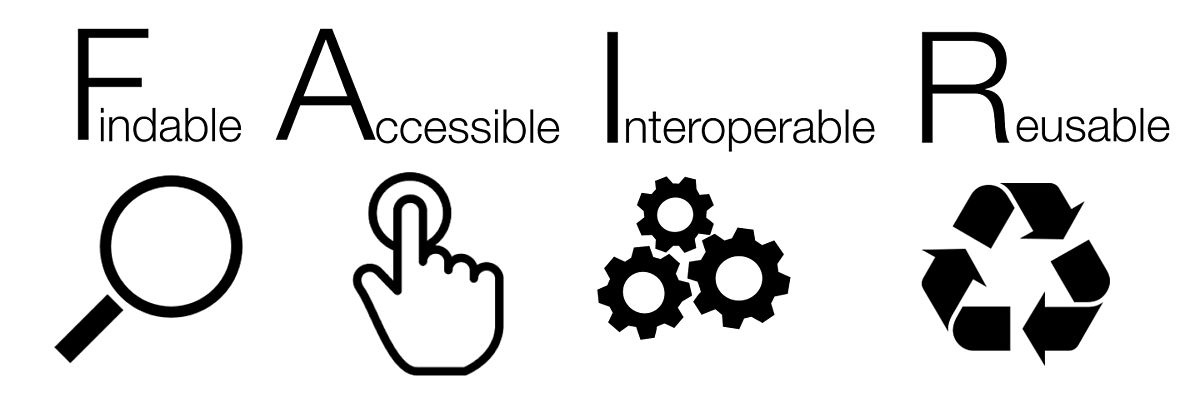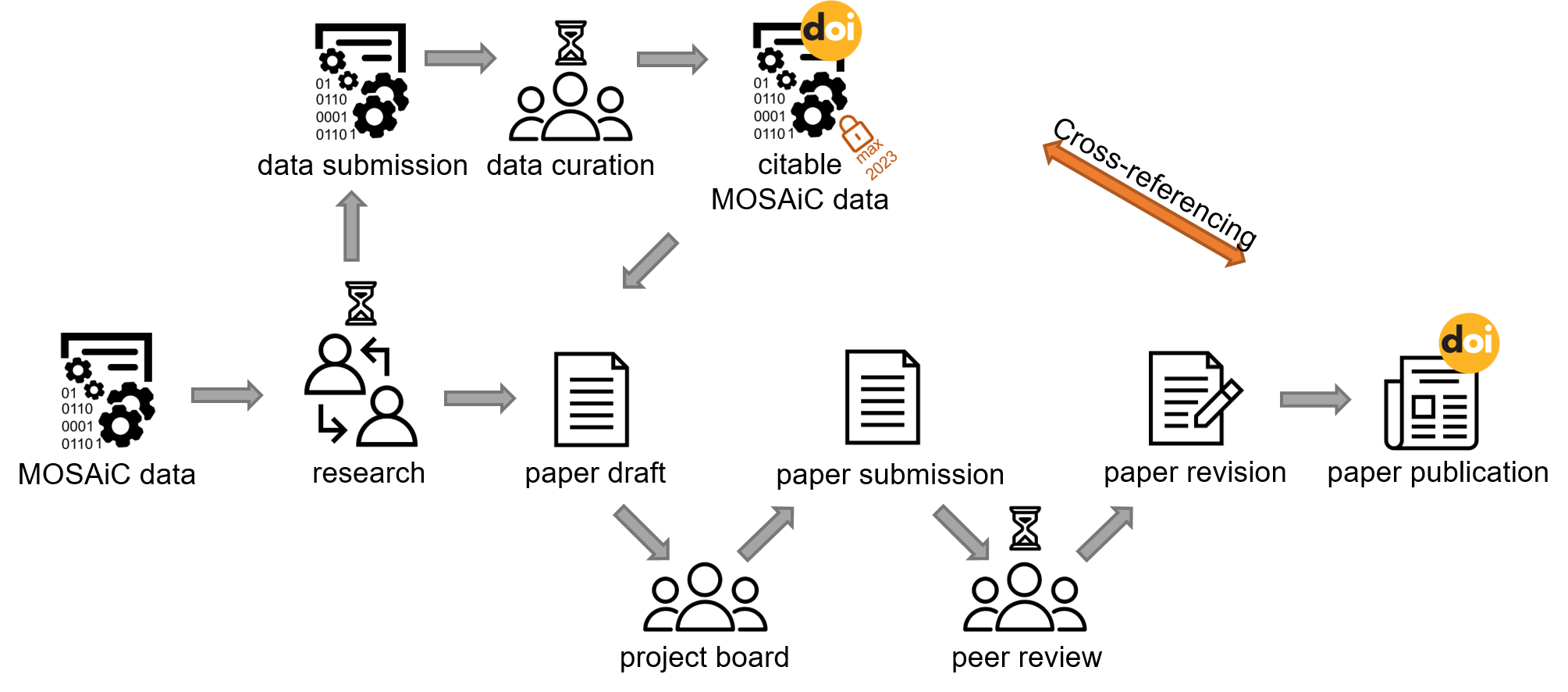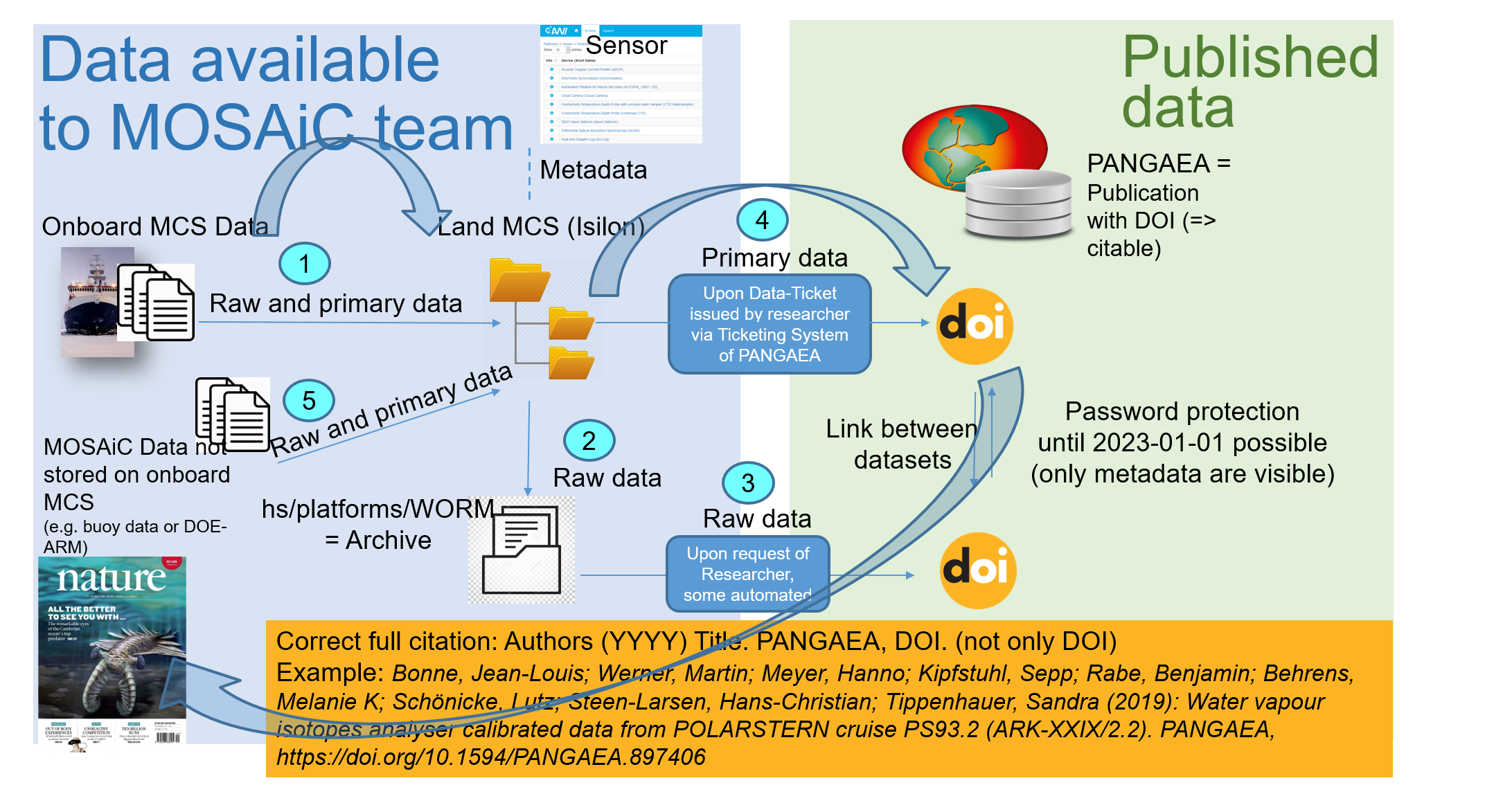Where do I publish “my” MOSAiC data?
|
When do I submit and publish “my” MOSAiC data?
Data publishing workflowThe workflow drafted below includes publishing data set in the repository before the paper submission. This enables correct crossreferencing of both.
|
How do I approach data publication?Row data / Primary data publication workflow
Data publication in PANGAEADatasets in PANGAEA may be archived as stand-alone publications of data (e.g., https://doi.org/10.1594/PANGAEA.753658) or as supplements to an article (e.g., https://doi.org/10.1594/PANGAEA.846130). Data can be submitted to and published in PANGAEA with access restrictions in place for a predefined period (until article publication, or during an embargo period). Metadata must be submitted together with the data. Minimal requirements are:
Any documentation (e.g., MOSAiC Standard operating procedures, MSOPs) helping to understand the data can and should be linked to the dataset(s). If no persistent link to the documents can be provided, PANGAEA can archive the documents permanently alongside the data. The MOSAiC Device operation ID(s) / Events list is available after the end of each leg from PANGAEA page https://www.pangaea.de/expeditions/byproject/MOSAiC (can be found for viewing or download under "Event list: " link). Within the data table, parameters (table header) should be submitted with full names and units. Data submitted in the form of videos, photos, geoTIFF, shape files, netCDF, sgy, etc. will be archived as is (e.g., https://doi.org/10.1594/PANGAEA.865445). More information on data submission can be found in https://wiki.pangaea.de/wiki/Data_submission. If a published dataset needs to be updated, PANGAEA will upload a new version of this dataset, with new documentation and complete metadata (clearly providing information on the changes between the versions). Both versions can be linked but will have their own permanent DOI. Data submission to PANGAEAPublication of primary data sets in PANGAEA or other recommended repositories is the responsibility of each scientist (MOSAiC data policy). The data can be submitted via https://www.pangaea.de/submit/. Sign in with your user name. If you are not a PANGAEA user yet you need to register with your name and E-Mail address, or ideally your ORCID ID. An ORCID ID is a unique identifier for academic authors. To find more about ORCiD, visit www.orcid.org. This login can later also be used to access your password protected dataset during the review of your data publication. After signing up, you will receive a link via email to activate your account and sign in. Once logged in, click on “Submit data” and a data submission form will open. In this form, you can enter the information from your checklist, including
You can choose the license under which you plan to share your data. We recommend CC-BY, which is suitable for scientific data reuse. Finally you need to attach your dataset files. If your data files are larger than 100 MB we can provide an upload link for large files up to 10 GB per file. Please indicate this in the Description-field. Once you think you have entered all necessary information and data files, you can click on “Create”. Do not worry if you are uncertain about some fields or content, you will still be able to make final adjustments during the following steps and with support of your data curator. First the submission passes a brief editorial review to make sure the data submission is complete. If questions remain, we will get back to you. Then the submission will be assigned to a data curator who will lead you through the further process. After we’ve imported your data to PANGAEA, you’ll be asked to proofread your dataset, which is then “in review”. We lead you through this iterative process with our ticket system until the data submission is complete and approved by you. Once the dataset is approved, the digital object identifier, DOI, is registered and with that the dataset is officially published and citable. If the related manuscript has not been published yet, a moratorium on access and publication can be put in place. At the same time, PANGAEA can provide a temporary key to enable access to your datasets for example for anonymous reviewers. In general, moratorium on MOSAiC data is possible until 2023-01-01. Preparing data submission to PANGAEA |




